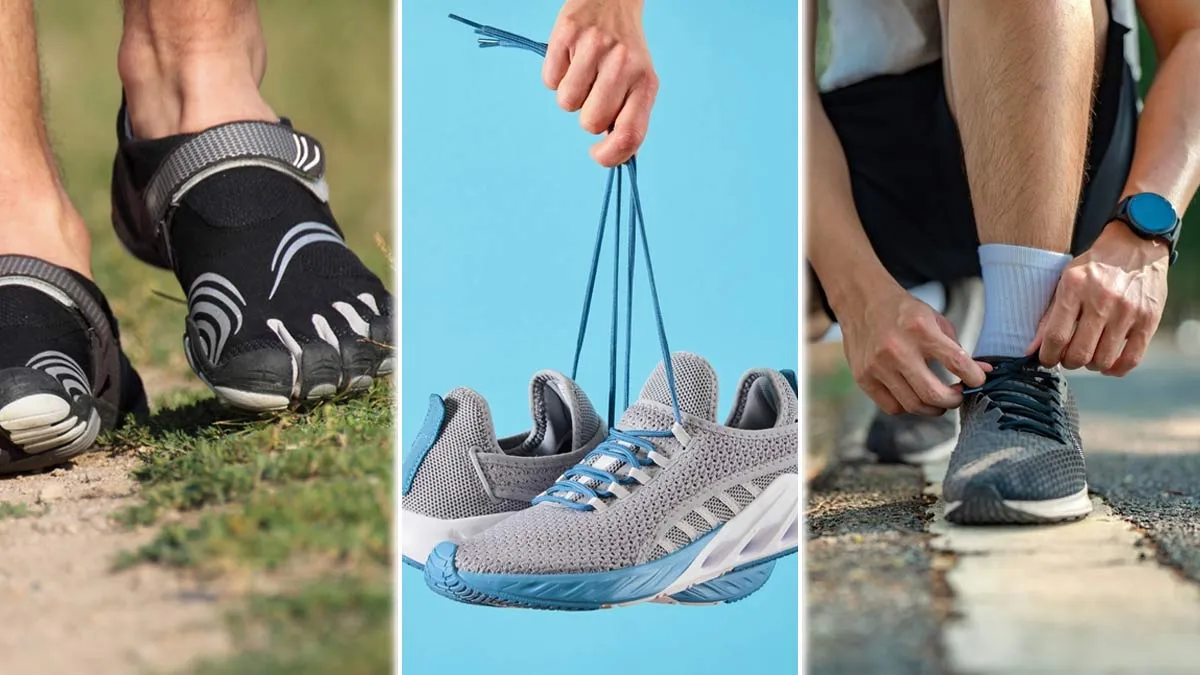
Footwear significantly impacts foot health and overall biomechanics. The choice between narrow-toe shoes and barefoot shoes can affect muscle function, foot strength, and injury risk. Many people are unaware of how their shoe choices influence their body mechanics. Narrow-toe shoes are popular for their sleek design but often come with hidden drawbacks and can restrict natural toe movement and lead to discomfort.
Table of Content:-
On the other hand, barefoot shoes aim to mimic the natural shape of the foot. They promote a more natural walking or running style. Regarding the differences between the two, Keertan Shetty, a hybrid athlete and online fitness coach shared how muscles contract in regular shoes and affect overall foot health.
What Is The Difference Between Narrow Toe Shoes and Barefoot Shoes?
-1736315440224.jpg)
Keertan Shetty, a hybrid athlete and online fitness coach, highlights the key differences between narrow-toe shoes and barefoot shoes. Understanding these differences can help you make better choices for your foot health and overall performance.
Barefoot Shoes
- Design: Barefoot shoes, often called five-finger shoes, feature individual compartments for each toe. The design of these shoes mimics the natural shape of the foot.
- Toe Functionality: They allow for greater toe movement and splay, which is essential for balance and stability.
- Muscle Engagement: Wearing barefoot shoes engages the small muscles in the feet, promoting strength and flexibility.
- Natural Foot Shape: These shoes support the natural width of the foot, preventing deformation over time.
Narrow Toe Box Shoes
- Design: Narrow-toe box shoes have a tapered front that constricts the toes, limiting their movement.
- Foot Deformation: Over time, wearing these shoes can alter the natural shape of the foot, leading to issues such as bunions or hammertoes.
- Muscle Weakness: The confinement of toes in narrow shoes can weaken more than 20 intrinsic muscles in the feet, reducing overall strength and stability.
- Reduced Potential: By restricting toe movement, narrow-toe box shoes limit the foot's potential for balance and agility.
Are Barefoot Shoes Better For You?
View this post on Instagram
Barefoot shoes unlock the significant potential of our feet, often overlooked in traditional footwear. The expert advocates for barefoot shoes in training routines like weightlifting, callisthenics, and cardio, noting improvements in foot control and overall leg strength. It encourages natural movement, strengthens foot muscles, and enhances biomechanics. However, transitioning to barefoot footwear should be approached gradually to allow for proper adaptation. By understanding these benefits, you can make informed decisions about your footwear choices to support foot health and enhance athletic performance.
Also Check: HMPV Virus Cases In India Live Updates
How Do Barefoot Shoes Affect Running Techniques?
Barefoot shoes can significantly enhance running techniques by promoting a more natural and efficient style. Here are some key effects of barefoot shoes on running:
- Forefoot Strike: They encourage a forefoot strike instead of a rearfoot strike, conserving momentum and reducing braking forces.
- Higher Cadence: Runners often adopt a higher cadence and shorter ground contact time, improving balance and stability.
- Improved Proprioception: Increased sensory feedback allows for better adjustments to the running surface.
- Energy Efficiency: According to a study published on PubMed, running in barefoot shoes can improve energy efficiency by up to 6.8% compared to traditional footwear.
- Utilisation of Arches: Barefoot shoes enable the foot's arches to act like springs, propelling the body forward while decreasing peak ground reaction forces, which can lower injury risk.
Conclusion
Choosing between narrow-toe shoes and barefoot shoes goes beyond comfort as it significantly impacts foot health and injury risk. Narrow-toe shoes may provide immediate cushioning but can weaken foot muscles over time. In contrast, barefoot shoes encourage natural movement patterns that strengthen foot muscles. For those aiming to enhance foot health or athletic performance, transitioning to barefoot footwear can be beneficial.
Also watch this video
How we keep this article up to date:
We work with experts and keep a close eye on the latest in health and wellness. Whenever there is a new research or helpful information, we update our articles with accurate and useful advice.
Current Version
